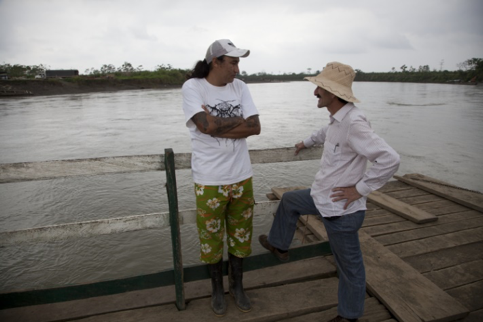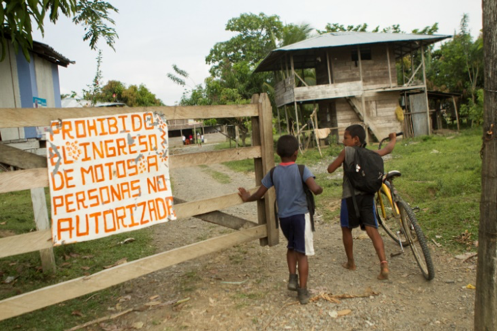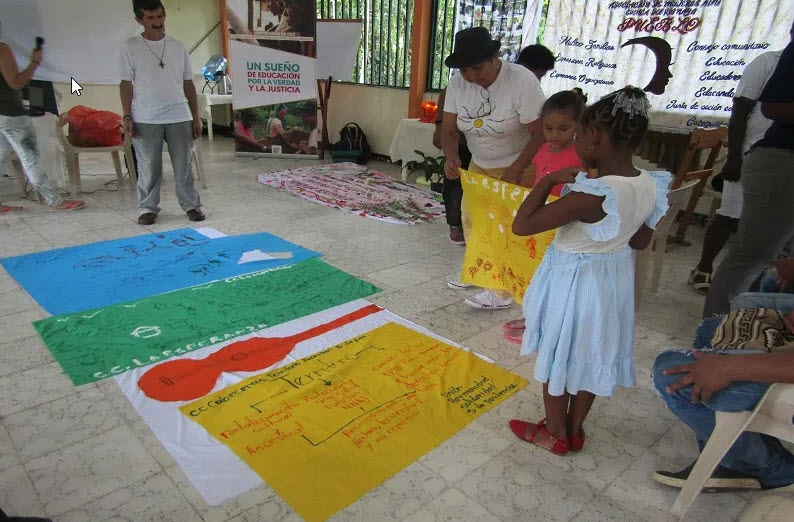- For more than two decades, Christian Aid and its partners, including the Inter-Church Commission for Justice and Peace (CIJP), have been working to tackle violence and build peace in Colombia. Ten Years, a long-term study of change being undertaken by Christian Aid’s Research, Evidence and Learning team, first begun around three years ago following the signing of a Peace Agreement between the government of Colombia and the Revolutionary Armed Forces of Colombia (FARC).
- The first part of this four-post series described the project’s aims and presented six videos which give the background to the area studied and the work of Christian Aid’s local partner CIJP.
- In the second blog post, Christian Aid explained why they chose to conduct a long-term study, how they sought to involve local partners in this, and what were some of the challenges they faced along the way.
- In this third part, we hear how organisations like CIJP are having to change and adapt in-line with the recent shift towards peace-building at an institutional level in Colombia.
Adapting work to the political context
In development circles, politically smart adaptive management is seen as a means to tackle challenges that are complex and multi-faceted – especially during transitions such as this one, from conflict to peacebuilding. Constantly responding to an analysis of the political context is an important route to achieving this. But what does working in this way look like in practice for a Colombian human rights NGO?
This blog shares some reflections, gathered in early 2019, about how the Inter-Church Commission for Justice and Peace (CIJP) has adapted to the changes in political context triggered by the signing of the 2016 peace agreement, and subsequent efforts to implement it. It is the result of a short consultancy by Rosemary McGee, a researcher who has had a long working relationship with CIJP.
These reflections offer an insight into how an organisation set up to respond to a violent conflict has changed as the institutional spaces where it interacts are altered by a shift towards peace-building.
From conflict to peace-building: shifting terrain for civil society
Founded in 2002, CIJP is driven by its conviction that the Colombian state falls short of the vision and commitments of the 1991 constitution, which define it as a social and democratic state subject to the rule of law. CIJP therefore exists to help provide the conditions and necessary support for all Colombians to play their part in ensuring that the state fulfils its constitutional commitments.
During the years of the conflict, the fundamental assumption underpinning CIJP’s work was that to exercise their rights safely, people and their organisations need intense, protective support; and CIJP could contribute to providing it. During the years of negotiating the peace process, CIJP – along with many other civil society organisations – played an active role in pushing the negotiations forward. For example, as part of the movement ‘Colombians for Peace’, it helped secure the exchange of kidnap victims held hostage by the guerrilla for guerrilla combatants imprisoned by the state, which had been a stumbling block in the negotiations. This significantly swung public opinion towards support for the peace negotiations.
The operating context for civil society as a whole, and especially human rights organisations, has changed radically since the signing of the Peace Agreement and subsequent developments. New opportunities emerged as the state apparatus for the implementation of transitional justice was rapidly established: the Integral Truth, Justice, Reparation and Non-Repetition System, the Truth Commission and the Search Unit for People Assumed Disappeared. But new challenges also emerged as a result of the negligible progress of other elements of the peace agreement, and reversals in the working of this new apparatus.
This shifting context has driven changes in the fabric of the human rights movement at local, regional, national and international levels. Contextual changes have modified CIJP’s understanding of its scope and spaces of operation. The main internal and external changes concerned the dynamics of the conflict and international perspectives on it, the formal and informal norms that govern the scope of CIJP’s actions, and the changing priorities of the communities supported by CIJP.

Different ways of working
By late 2018, there were three substantial adjustments in CIJP’s ways of working:
- New spaces, new frames: CIJP began working with the new organisations of transitional justice to reach both victims and perpetrators of violence. During this period, their framing of justice shifted from ‘criminal justice’ to ‘transitional and restorative justice’.
- From protection to supporting development: CIJP began to shift from emphasising self-protection by conflict-affected communities under international humanitarian law, to offering support and technical assistance for productive and livelihood-related projects.
- A new relationship with the private sector: While recognising that some private sector actors are deeply implicated in sustaining the conflict despite the Peace Agreement, CIJP began to cautiously forge alliances with private sector actors who are committed to the fulfilment of human rights and environmental protection.
As well as these adjustments, work was divided into five different thematic areas: agro-environment, communication, education, psychology and legal. In each case, these work areas were adjusted to reflect the potential for peace-building. For example, work on education not only concerned promoting the right to education with contextually relevant curricula and methodologies, but also the tentative establishment of a Peace University. This was conceptualised as a contribution to constructing a new culture of peace and democracy by not only offering education, but also by offering a physical space that could be used by transitional justice institutions, offering them a place to operate deep in the heart of those areas most affected by the conflict.

Looking forward and tracking change
Documenting how CIJP had adapted to change 24-months after the signing of the Peace Agreement offered a way not only to describe what had shifted, but also a way of analysing what might change in the future as the context continues to alter. A simple framework for tracking future change focuses on the spaces in which CIJP interacts with different actors. Analysis of these spaces – their nature, status and rules – and how they intersect with CIJP’s areas of work at different levels will allow a structured interpretation of how the organisation adapts to change, and what this implies for future practice. Such analysis can make an important contribution towards strengthening the strategies and interventions now used by CIJP in working towards mobilised communities, an operational rule of law, and a democracy based on justice and peace.
For more detail on CUP’s theory of change and the framework for tracking future change, see REL Practice Paper No. 2 Understanding change and peace-building: Tracking the transitional theory of change of a Colombian peace-building NGO
Main image: Workshop for Memory & Peace, Valle del Cauca. Image: CIJP


